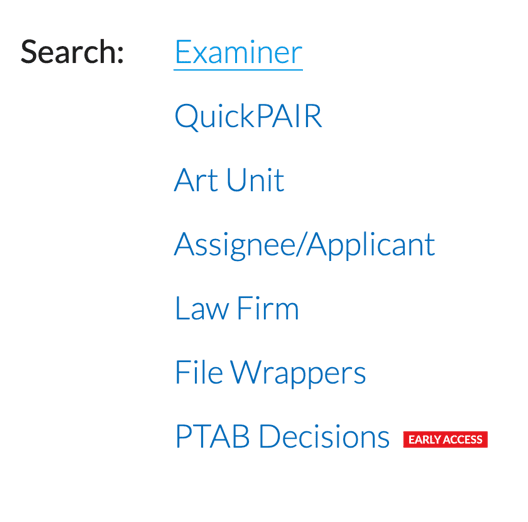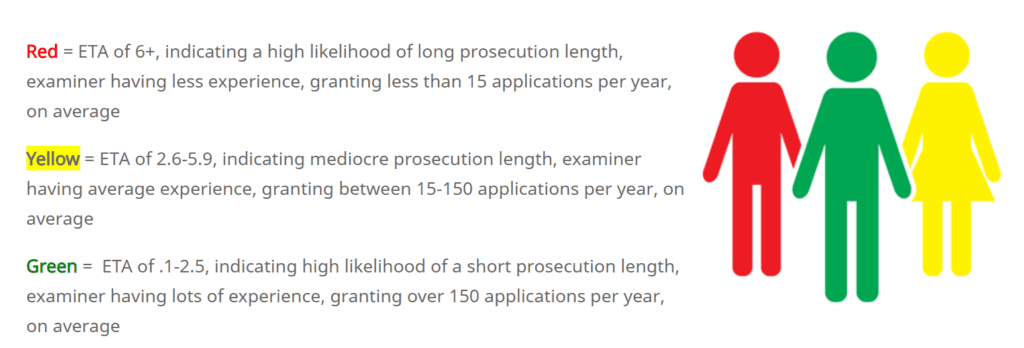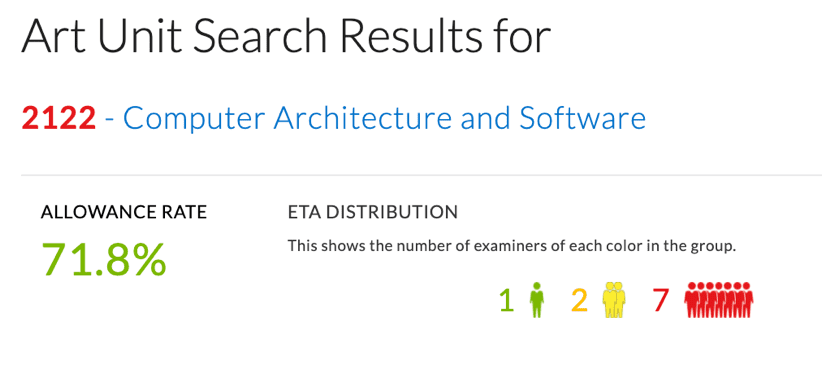Use Patent Data to Understand USPTO Examiners

Getting to know someone is hard and getting to the level of really understanding someone takes even more effort . . . usually. When it comes to patent prosecution, patent data and analytics make the process to understand USPTO examiners easier than ever. Here are a few tips on how to get acquainted with your assigned examiner.
To understand USPTO examiners: take note of their history
There is nothing new about evaluating an individual based on their professional performance statistics. Businesses ranging from baseball teams to pharmaceutical companies use performance data to understand their employees and make strategic decisions based on the insights they uncover. Fortunately for patent practitioners, the USPTO archives are rich in patent examiner data that can be used to develop a thorough understanding of any patent examiner’s prosecution tendencies. How long prosecution with a specific patent examiner typically lasts, how many office actions an examiner usually issues for each patent application, how they respond to interviews with patent applicants and how often their decisions are upheld on appeal can all be answered with USPTO patent data. The LexisNexis PatentAdvisor® patent prosecution platform transforms patent data into examiner statistics and insights that can help patent professionals answer important questions that inform their patent prosecution strategies.

To understand USPTO examiners: bust out a predictive algorithm
As much as a person’s past can teach us about them, it is important to remember that people do change over time and to be careful when holding their past against them. This is especially true of patent examiners who grow and evolve over the courses of their careers. As they mature into their roles at the USPTO and gain additional perspective, the actions they take throughout patent prosecution tend to trend differently than before. PatentAdvisor™ helps users understand USPTO examiners with PatentAdvisor ETA™ values which take into account changes in patent examiner tendencies. The PatentAdvisor ETA is an examiner-specific patent metric produced from a proprietary algorithm that addresses many of the shortcomings of ordinary patent statistics. By strategically weighting more recent examiner behaviors (including actions taken on pending patent applications, which are commonly ignored in calculating career statistics) and by identifying trends in patent examiner data, PatentAdvisor ETA is an excellent patent metric for predicting an examiner’s future behaviors.

To understand USPTO examiners: meet their “family”
In our personal lives, meeting a person’s family provides a lot of context around who that person is (and why they are the way they are). Patent practitioners do not need to meet their assigned patent examiners’ blood relatives (that would be weird), but learning about the other examiners in the same USPTO art unit can be useful. Patent practitioners can better tailor their decisions by accounting for how a patent examiner’s statistics relate to others in the same USPTO art unit. For example, if a “difficult” examiner’s statistics are similar to those of other patent examiners in the same art unit, then being statistically difficult is possibly related to the technologies they evaluate being difficult to patent by nature. Alternatively, if a “difficult” patent examiner is in an art unit with mostly applicant-friendly patent examiners, patent practitioners may be more inclined to take action to have their application reviewed by another set of eyes. PatentAdvisor users can evaluate the statistics of entire art units to aid in understanding their assigned examiners and can easily access patent analytics for each patent examiner in any USPTO art unit.

It is time to invest in understanding your USPTO patent examiner. PatentAdvisor tells each patent examiner’s story through examiner statistics and patent analytics. With a little extra context, PatentAdvisor users can understand USPTO examiners and predict the course of prosecution and the examiner’s decisions, giving them the power to adapt their patent strategies for better outcomes.
Watch this on-demand webinar to learn The Future of Patent Prosecution: The role of patent analytics and the evolution of the patent prosecutor.
Learn more about PatentAdvisor.

Need more predictability in the patent prosecution process?
Learn how to develop successful IP strategies and proficiently manage patent applications throughout the entire prosecution process using data-driven insights and advanced analytics.
